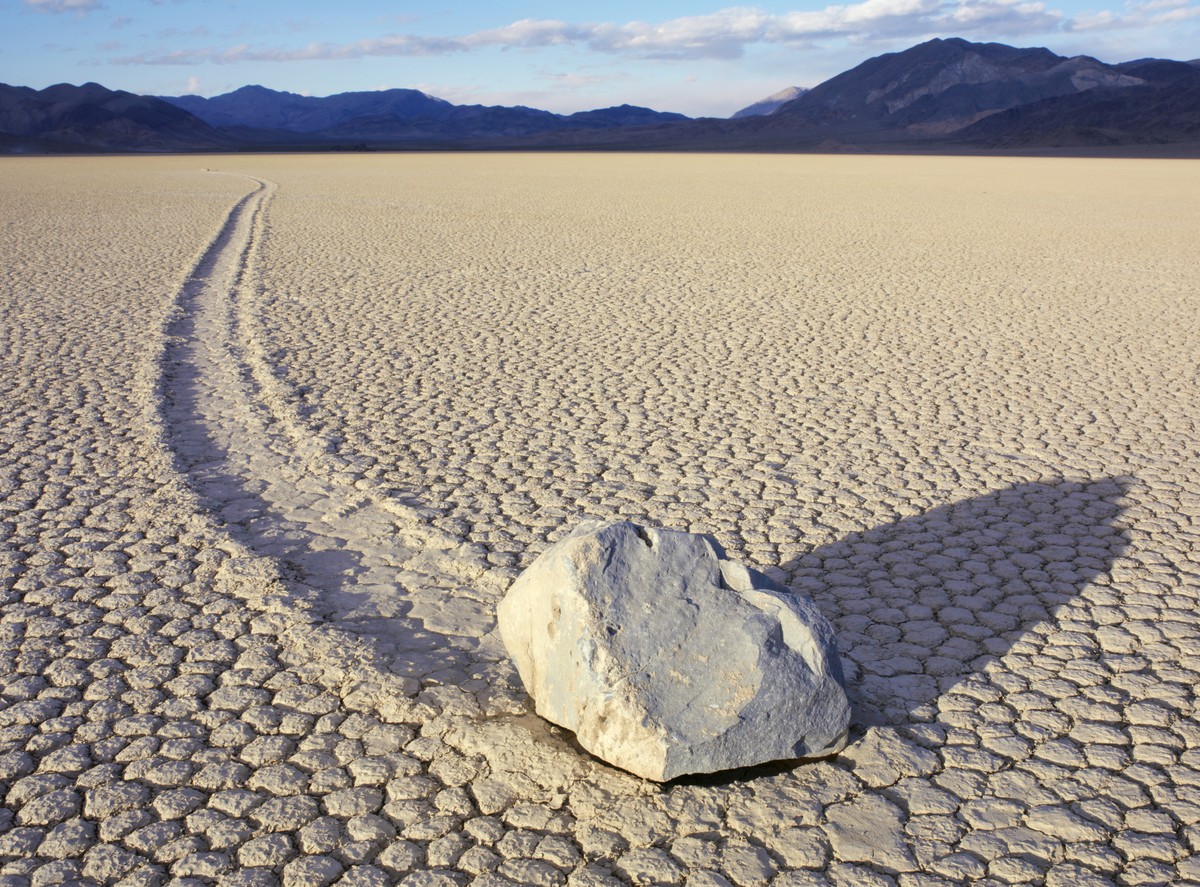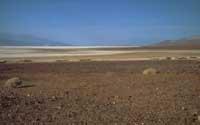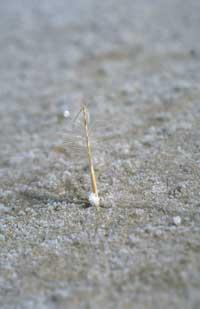The theme of itinerant stones is not so much mystery
2010/01/10 Lakar Iraizoz, Oihane - Elhuyar Zientzia
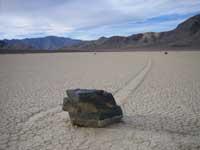
The stones that move are not only small balls, but also move pieces of stones up to 320 kilograms. And the most curious thing is that no one has ever seen them move. However, several geologists have studied and demonstrated that with the stones placed tools like GPS, they move from one place to another.
However, there are more evident tests that show that they move: during the journey they make signs of it. It is easy to see the route they have made and, in fact, they are very curious: some move directly, others make zigzag bigger, some even change direction, etc.
And all this in an area without steep slopes. In fact, the Racetrack Beach was an ancient lagoon and, currently, the flat bottom of the lagoon is an arid plain. The stones are the only ones that give life to this area... and, of course, the stones are not alive.
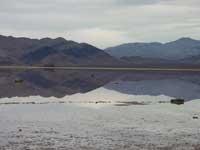
When it rains, a water layer of a few centimeters is formed. In winter, when frozen, ice facilitates the movement of stones (Photo: USGS).
A mystery, a clear explanation
It may seem that this question of walking stones is a mystery without explanation, but in reality it does not have that mystery. The U.S. Department of Geology studied in depth the movement of stones and, once and for all, clarified how and why they move. They are mobilized by certain geological and meteorological conditions that converge in the area at specific times.
The remains left in their path suggest that they only move when the soil is wet. Therefore, we have a first "component" necessary in this phenomenon: rain. But, of course, it is not enough to be wet, but a motor force is needed.
Apparently, the engine is the wind. Even though they make setbacks and appear to move aimlessly, the researchers have been able to verify that the stones move north or northeast approximately. And it is in that direction where the dominant wind of the area moves.
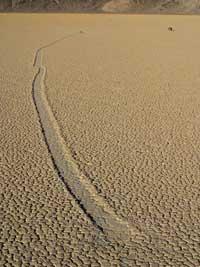
The tracks that leave in motion make it clear that they move, even if no one has seen them (Photo: Tetraktys).
However, stones do not move as long as it rains and the wind is at once; they move every two years and always in winter. Why? For only in winter is ice formed, the third "component" necessary to move the stones.
In this area it rains very little, but when it does it forms a sheet of water of three or four centimeters in the bottom of the lagoon. In winter this water freezes quickly, since, as is usual in deserts, temperatures are usually very extreme: in summer it is very hot and in winter it is very cold.
Thus, in winter, the stones are surrounded by ice. When the ice begins to melt, the ice sheet is broken and the wind pushes the ice sheets and the stones "soaked" in them. Having under a layer of water and slippery clays slide. And on the way they leave clear traces that then, once again dry, provoke several headaches.
Published in 7K.

Gai honi buruzko eduki gehiago
Elhuyarrek garatutako teknologia




